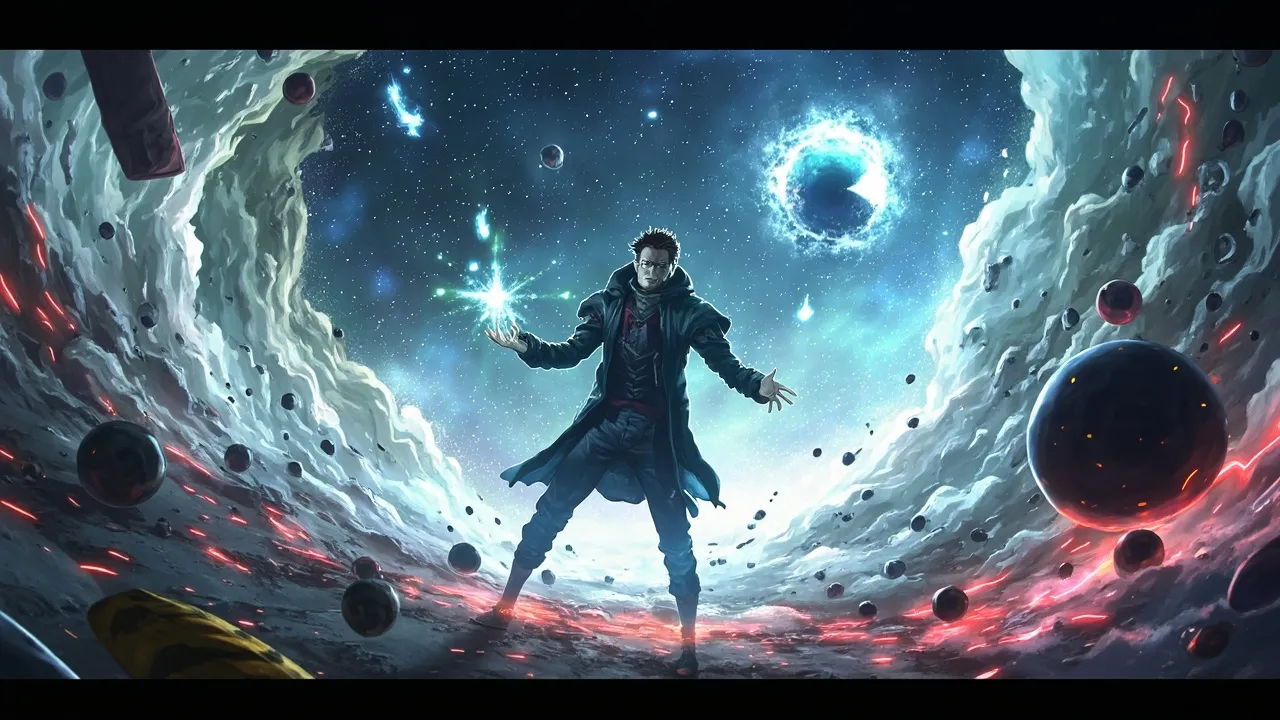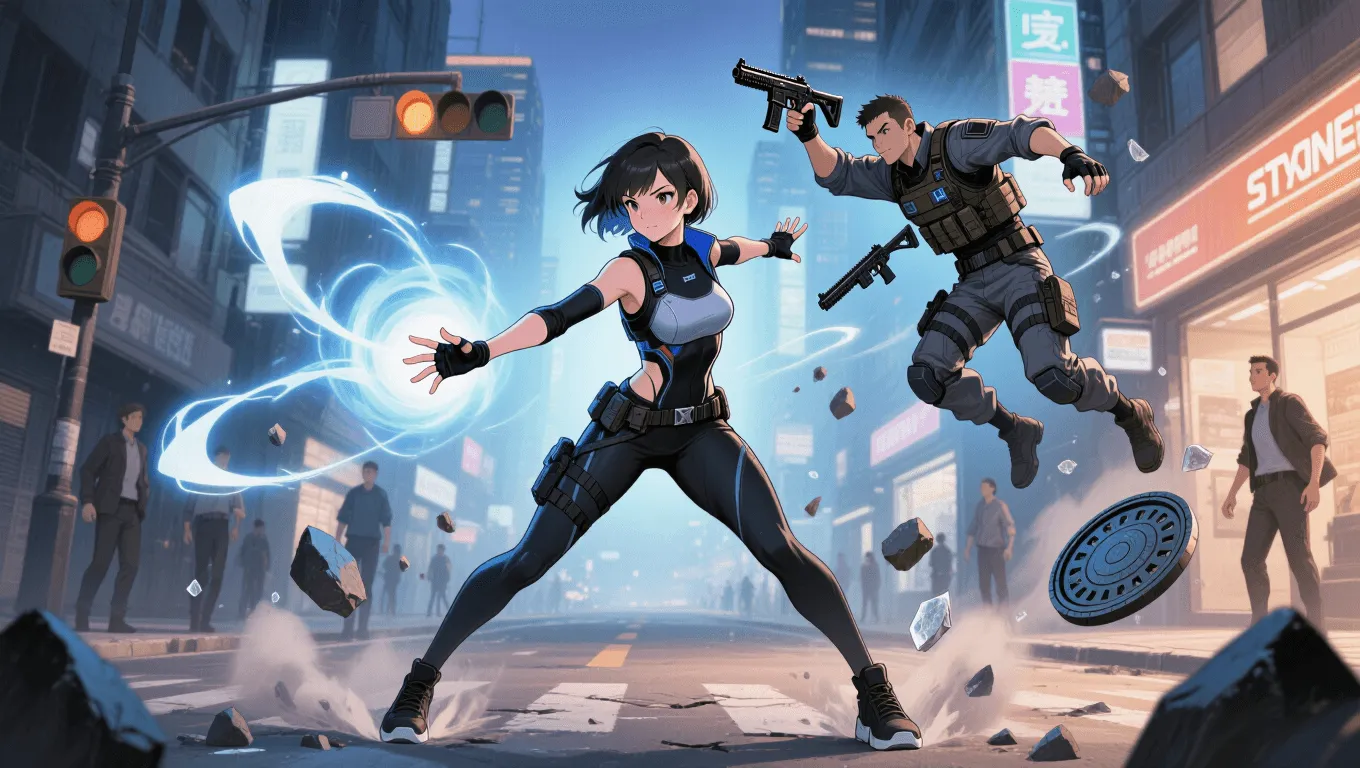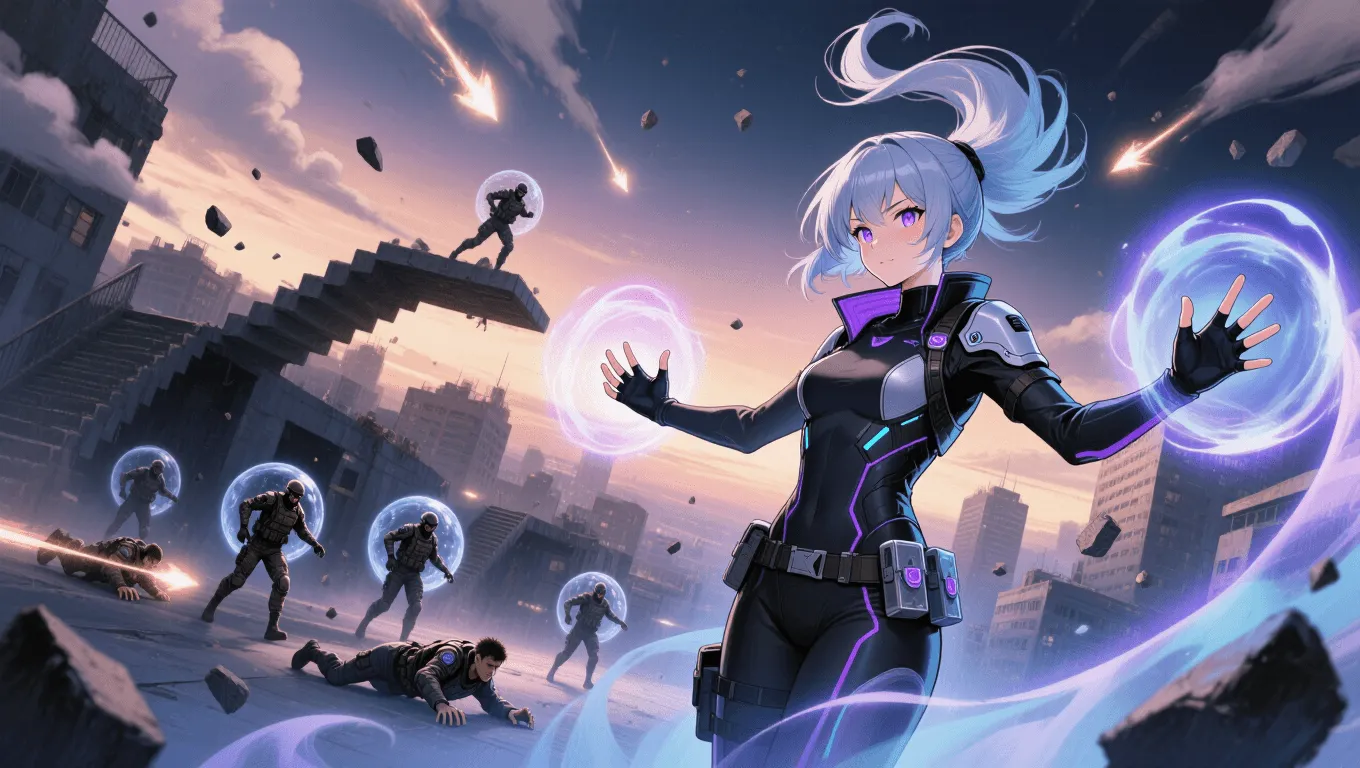Gravity Distortion: Complete Power Guide

Gravity Distortion Video Demo 🎬
Table of Contents
- Gravity Distortion Video Demo 🎬
- What Is Gravity Distortion
- Core Abilities of Gravity Distortion
- Application / Tactical Advantages in Combat
- Level: Level 1 🏙️, Level 2 🌇, Level 3 🌃
- Limitations of Using the Gravity Distortion
- Weakness Against What Other Superpowers
- Synergistic Power Combos
- Known Users
Gravity Distortion is the superpower of bending, amplifying, weakening, or reshaping gravitational forces at will. Often called gravitokinesis, gravity manipulation, or gravity control, this ability lets a user influence weight, mass effects, acceleration, and tidal forces across a space—from a palm-sized zone to an entire battlefield. In fiction, Gravity Distortion appears in heroes and villains who create microgravity fields, force wells, or even localized singularities. This guide breaks down how the power works, what it can do in combat, its levels, limitations, counters, and synergistic combinations. For more abilities, check the full superpower wiki or try a new idea with the random superpower generator.
What Is Gravity Distortion
Gravity Distortion is the controlled alteration of the gravitational field in a defined area. Rather than simply turning gravity “on” or “off,” the user manipulates vectors and magnitudes: intensifying gravity to pin targets, inverting it to create anti-gravity lifts, or warping its curvature so objects orbit a point in midair. Advanced users may simulate effects similar to gravitational lensing, inertial dampening, and variable mass—causing projectiles to arc oddly, bodies to feel heavier or lighter, and debris to spiral like satellites around a chosen anchor.
Key related terminology includes gravitokinesis, mass manipulation (apparent mass through gravitational effect), gravity wells, event-horizon mimicry, and localized microgravity. While true general relativity involves spacetime curvature, this power focuses on practical outcomes: movement, pressure, traction, lift, collapse, and trajectory control.
Core Abilities of Gravity Distortion
Field Shaping
The user projects a field that strengthens, weakens, redirects, or inverts gravitational pull. This can be a sphere, cone, plane, or ribbon of altered gravity. Field shaping allows precise “lanes” for allies to move fast and “quicksand zones” that slow enemies.
Weight & Mass Effects
Although mass is intrinsic, the user can simulate mass changes by altering gravity’s influence on targets. This “effective mass” increase makes it harder to jump, run, or swing weapons. Conversely, reducing gravity enables high jumps, silent landings, and effortless carrying of heavy gear.
Vector Reorientation
By rotating the “down” direction, Gravity Distortion can cause enemies to topple sideways or fall toward a wall. Reorienting vectors disorients targets, breaks formations, and creates vertical battlefields where the user defines terrain.
Microgravity & Anti-Gravity
Creating pockets of microgravity neutralizes recoil, reduces fall damage, and enables midair maneuvers. Anti-gravity zones can levitate objects, suspend debris as shrapnel traps, or float allies for aerial vantage.
Gravity Wells & Pinning
Concentrated wells dramatically increase pull in a small region, pinning foes to the ground, collapsing cover, and preventing escapes. Pinning is a staple for crowd control—effective against speedsters and flyers.
Tidal Shear
By varying gravity across adjacent areas, the user induces tidal stretching—enough to unbalance opponents, tear apart flimsy structures, or twist projectiles off course without outright crushing them.
Orbital Dynamics & Slingshots
Objects can be placed into temporary orbits around a focal point. The user can then release them for curved “boomerang” shots or hyper-accelerated slingshots, turning rubble, blades, or even droplets of water into unpredictable weapons.
Inertial Dampening
Reducing the perceived effects of sudden acceleration protects allies from impact and enables high-G maneuvers. Cars can stop short without whiplash; jumps from rooftops become safe.
Gravitational Lensing (Advanced)
Subtle field curvature can bend light paths, creating limited visual distortions—useful for misdirection or masking positions. While not true invisibility, it confuses aim and rangefinding.
Application / Tactical Advantages in Combat
Battlefield Control
Gravity Distortion shapes the engagement itself. The user lays down heavy-gravity “no-go” zones, channels enemies into kill corridors, and keeps flyers grounded. Vector flips cause instant terrain changes, forcing melee units to climb invisible slopes while allies glide along low-G lanes.
Offensive Pressure
Gravity wells pin targets; tidal shear loosens grips; slingshots turn debris into kinetic darts. Amplified gravity can compress shields, buckle armor, and snap weapon stocks. In anti-gravity, an enemy’s footing disappears, undermining power stances and recoil control.
Defensive Utility
Microgravity eliminates fall risk and reduces incoming kinetic energy. Inertial dampening makes explosions and collisions less lethal. Lensing effects distort enemy targeting; redirected projectiles arc wide or spiral into controlled orbits.
Mobility & Logistics
Low-G corridors accelerate retreats or flanking routes. Heavy gear moves like paper; vehicles hop barricades with cushioned landings. Extraction missions benefit from effortless lifting of casualties or cargo.
Counter-Projectile Management
Bullets, arrows, and energy bolts can be tugged off path or captured into orbits, then re-deployed. Even if not fully stopped, subtle curvature is enough to spoil accuracy.
Level: Level 1 🏙️, Level 2 🌇, Level 3 🌃
Level 1 🏙️ – Street-Scale Controller

-
Scope: A few meters around the user; short bursts.
-
Typical Feats: Light gravity dampening for higher jumps; brief pinning of one opponent; small vector tilts indoors; softening falls.
-
Tactics: Use quick “gravity taps” to break guard stances and force weapon drops. Create low-G steps for parkour escapes. Pin key threats just long enough for allies to cuff or disarm them.
-
Limitations at L1: Short duration; noticeable wind-like field shimmer; requires line of sight; heavy objects remain challenging.
Level 2 🌇 – District-Scale Manipulator

-
Scope: Entire building floors or city blocks; multiple simultaneous fields.
-
Typical Feats: Sustained gravity wells that pin squads; corridor-length vector flips; microgravity bubbles for stealth insertions; consistent inertial dampening for team movement.
-
Tactics: Shape urban terrain: make stairwells “downhill,” rooftops “flat,” and enemy cover “uphill.” Slingshot rubble for curved suppressive fire. Redirect grenades or tear gas clouds with tidal gradients.
-
Limitations at L2: High energy cost for multiple fields; fine control becomes harder at max radius; environmental damage risk (collapsed scaffolds, broken pipes).
Level 3 🌃 – Strategic Gravitect

-
Scope: Wide districts or limited open terrain; precise multilayered control.
-
Typical Feats: Multi-vector battle maps; layered gravity wells; gravitational lensing for misdirection; broad inertial dampening enabling high-speed vehicle maneuvers. In extreme scenarios, short-lived micro-singularity mimics (non-cosmological) to implode barriers.
-
Tactics: Orchestrate entire operations: ground enemy air units with a citywide “heavy sky,” channel armor into chosen routes, and run low-G evacuations. Orbit drones or debris as mobile shields that absorb fire and then return on curved paths.
-
Limitations at L3: Severe strain, potential collateral damage, and ethical risks if pressure exceeds safe biological thresholds.
Limitations of Using the Gravity Distortion
-
Energy & Focus Drain: Precise field geometry is mentally intensive. Overuse causes dizziness, inner-ear imbalance, migraines, and tremors.
-
Biological Safety: Excess gravity can cause capillary rupture, joint compression, or loss of consciousness; anti-gravity can induce nausea and disorientation. Responsible users set safety caps.
-
Line of Effect & Medium Interference: Dense barriers, electromagnetic storms, or exotic materials (fictionally “gravi-insulators”) can reduce field cohesion or blur edges.
-
Scale vs. Precision Tradeoff: Large fields dilute finesse; fine sculpting requires close proximity.
-
Conservation Consequences: Strong, sudden changes to trajectories can scatter debris unpredictably; slingshots risk collateral damage at long range.
-
Environmental Sensitivity: Underground, high-rise, or zero-G environments may alter performance. Liquids and loose substrates can behave chaotically under tidal gradients.
Weakness Against What Other Superpowers
-
Forcefield Specialists: Rigid forcefields can maintain internal reference frames, resisting vector flips and tidal shear.
-
Spatial Anchors / Teleportation: Teleporters bypass fields entirely; spatial anchors pin themselves to a nonlocal frame, ignoring gravity changes in the local zone.
-
Density or Mass Fixation: Density manipulators who harden mass at the molecular level can reduce effective influence, making pinning less reliable.
-
Vibration / Sonic Masters: Rapid resonance can destabilize delicate field edges, causing “gravitational fringing” that weakens pins.
-
Technopathy & Counter-Grav Tech: Smart armor with inertial compensators or gravity-cancellation nodes can nullify small-area wells.
-
Psionic Disruption: Mental attacks or illusions that break concentration undermine complex field patterns, forcing the user back to simpler, less effective shapes.
Synergistic Power Combos
-
Aerokinesis + Gravity Distortion: Wind corridors plus low-G lanes create silent, high-mobility insertions and “falling sky” traps where turbulence amplifies tidal shear.
-
Telekinesis + Gravity Distortion: TK provides precision handling while gravity fields supply area denial and slingshot acceleration—turning pebbles into hypersonic arcs.
-
Earth Manipulation + Gravity Wells: Collapse tunnels or raise cover, then lock it with a gravity pin; reshape terrain and fix it in place.
-
Time Dilation (Light Touch) + Inertial Dampening: Brief slow-time windows with dampened inertia allow impossible vehicle turns and vertical sprints without injury.
-
Light Manipulation + Lensing: Subtle refractive bending with constructed illusions creates misdirection and stealth, confusing range and depth cues.
-
Healing/Regeneration + High-G Training: Teams survive intense maneuvers and rebounds, enabling aggressive plays ordinary squads could not endure.
Known Users
-
Graviton (Franklin Hall) — A classic gravity manipulator known for city-scale feats and gravity wells. Learn more about the character on Marvel’s Graviton.
-
Gravity (Greg Willis) — A hero who learned to control attractive and repulsive forces, using orbital tricks and flight.
-
Tetsuo-like Archetypes — Characters whose power growth includes mass-scale field distortion and structural collapse themes.
-
Original Setting Exemplars — Elite operatives trained as “gravitects,” using vector reorientation and inertial dampening for special operations.
By mastering field shaping, vector control, and tidal effects, practitioners of Gravity Distortion become architects of the battlefield—able to pin foes, protect allies, and redraw the rules of movement. Explore more abilities on the superpower wiki or roll a new concept with the random superpower generator.
